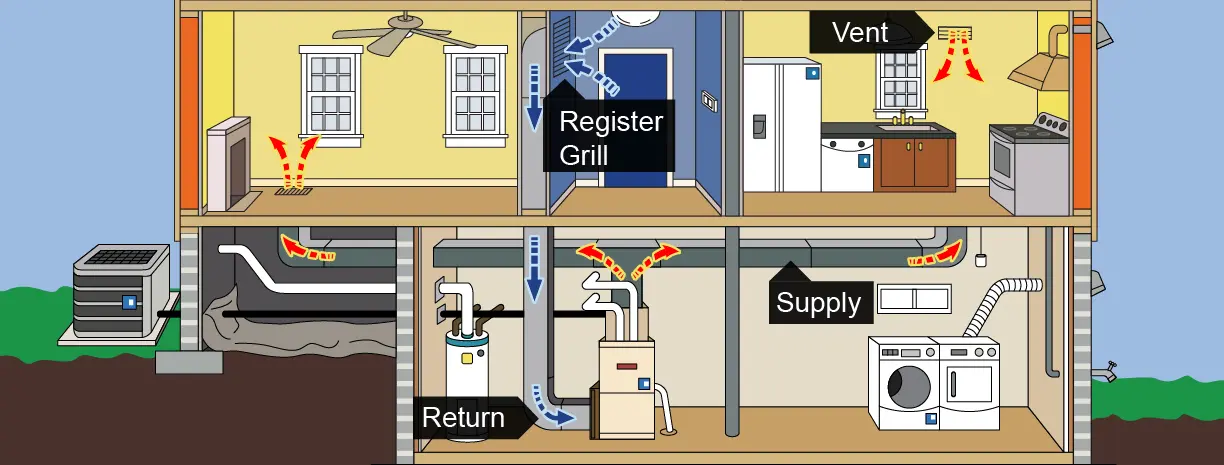Dirty air ducts can lower the efficiency of your HVAC system, reduce indoor air quality and even impact your health. But how often should you schedule a professional duct cleaning service? The recommended frequency depends on several factors:
Duct Material
- Flexible ducts made of plastic or aluminum should be cleaned every 5 to 7 years. They tend to accumulate more dust and debris over time.
- Metal rigid ducts last longer, typically needing cleaning every 8 to 10 years. They are less prone to damage and leaking.

Age of Your HVAC System
Older HVAC systems with ducts that haven’t been cleaned in 10 or more years likely need cleaning to restore efficiency and airflow. As ducts and components age, they accumulate more contaminants.
Household Dust and Allergens
If you or family members have allergies, asthma or other sensitivities, aiming for the more frequent end of the cleaning schedule is wise. More regular removal of dust, dander, mold and pollen can improve health and comfort.
Pets in the Home
Homes with pets, especially shedding animals, usually require more frequent duct cleaning. Pet dander, hair and oils can clog ducts and affect indoor air quality between professional services.
Visible Signs of Dirty Ducts
Issues like musty smells, excess dust in vents,Recurring HVAC repairs or higher-than-normal energy bills may indicate your ducts need cleaning sooner rather than later. Visible signs trump generic timelines.
Overall, most experts recommend professionally cleaning air ducts every 5 to 10 years depending on the factors above. However, if indoor air quality, comfort levels or HVAC efficiency seem to be suffering, having ducts inspected and cleaned sooner rather than later is better. A reputable duct cleaning company can assess your specific needs and recommend the optimal service schedule based on an in-home evaluation.These quick tips can make a difference in keeping your air ducts as clean and contaminant-free as possible between professional cleanings. Dirty ducts negatively impact the entire HVAC system, so keep them in mind as part of basic routine maintenance to ensure optimal performance, indoor air quality and comfort.

